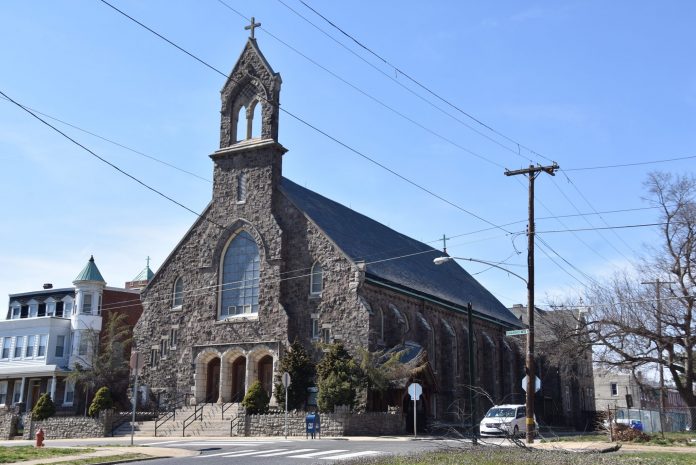Two properties in Tacony, St. Leo the Great Catholic Church and the Tacony Club, have been added to the Philadelphia Register of Historic Places.
It’s unclear how the designation will affect the future of the buildings, both of which were set to be sold prior to start of the nomination process.
The Philadelphia Historical Commission on Friday approved the nominations, which were submitted by the Tacony Community Development Corporation. The CDC has recently stepped up its efforts to secure protections for historic properties in the neighborhood.
Neither building can be demolished or significantly altered in the future without permission from the Historical Commission.
St. Leo, located at Unruh Avenue and Keystone Street, closed permanently in January after merging with Our Lady of Consolation Parish in 2013.
A congregation affiliated with the Seventh Day Adventists expressed interest in buying the church but the transaction was put on hold due to the historic designation process, an Archdiocese of Philadelphia spokesman told the Times last month.
“The Archdiocese took no position pro or con on this nomination,” Archdiocese spokesman Ken Gavin said in an email Monday. “The party who was interested in the site was not deterred by such a designation as long as the stained glass windows could come out.”
Gavin said the windows were removed before the Historic Commission’s decision on Friday.
Windows from a decommissioned Catholic church are typically sent to the Archdiocesan Ecclesiastical Exchange, where they are made available to priests, religious or other authorized buyers for use in an appropriate setting.
In the case of the Tacony Club, Brendan O’Mara, the club’s treasurer, said an agreement was made to sell the building at 4619-25 Longshore Ave. to Keystone Academy Charter School, which currently operates a block away.
The expansion would allow Keystone Academy to take in 400 additional students, O’Mara said.
O’Mara told the Times in an email before the Historic Commission meeting that the charter school threatened to back out if the nomination was approved.
He said Monday that he is still waiting to hear back from Keystone Academy. The school’s CEO could not be reached for comment.
During a Historical Commission committee meeting in April, at least one member of the commission suggested the restrictions should not be significant enough to deter the expansion, according to the meeting minutes.
The Tacony Club was constructed in 1908 and designed by Clyde Smith Adams in an Italian Renaissance Revival Style, according to the Historical Commission application.
It was built as a social club for the neighborhood’s prominent residents, and early members included Magistrate Thomas South and Peter E. Costello, both of whom were connected to Disston Saw Works.
“The Tacony Club was the building where wealth, political power and social ties came together to shape the future of Northeast Philadelphia and the Tacony neighborhood,” the nomination said.
St. Leo opened its doors several years before the Tacony Club, in 1894. It was constructed to accommodate the neighborhood’s growing number of Irish-Catholics and was designed by prominent church architect and Frankford resident Frank R. Watson.
Several other Historical Commission nominations for properties in Tacony are in the works.
Historical Society of Tacony President Lou Iatarola said during the group’s May 6 meeting that an application has been filed for a seven-building complex at 5250 Unruh Ave., formerly the home of the Tacony Worsted Mills.
In addition, there is a proposed nomination for the Frank Shuman House at 4600 Disston St., Iatarola said. Shuman was an inventor known for his work experimenting with solar energy. ••






